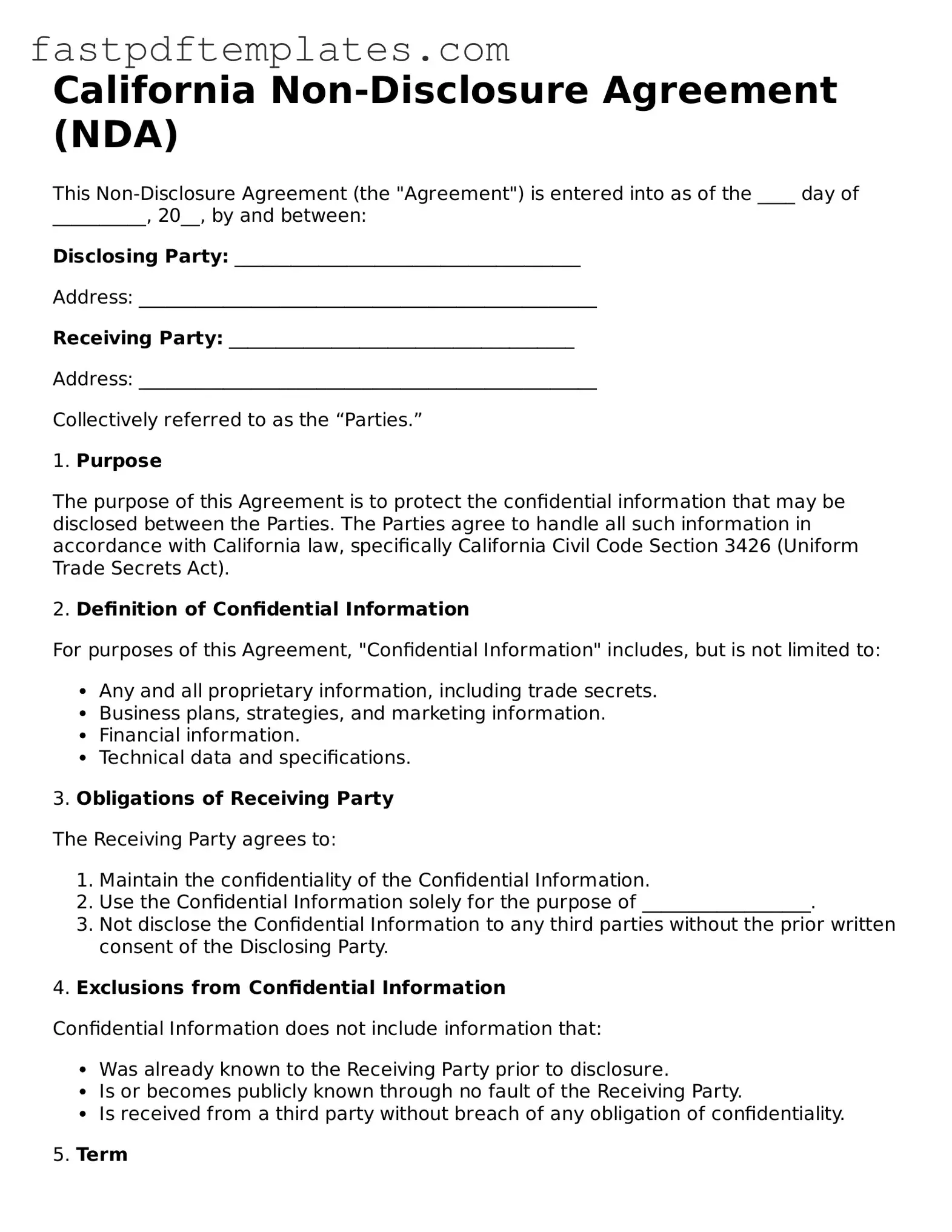California Non-Disclosure Agreement (NDA)
This Non-Disclosure Agreement (the "Agreement") is entered into as of the ____ day of __________, 20__, by and between:
Disclosing Party: _____________________________________
Address: _________________________________________________
Receiving Party: _____________________________________
Address: _________________________________________________
Collectively referred to as the “Parties.”
1. Purpose
The purpose of this Agreement is to protect the confidential information that may be disclosed between the Parties. The Parties agree to handle all such information in accordance with California law, specifically California Civil Code Section 3426 (Uniform Trade Secrets Act).
2. Definition of Confidential Information
For purposes of this Agreement, "Confidential Information" includes, but is not limited to:
- Any and all proprietary information, including trade secrets.
- Business plans, strategies, and marketing information.
- Financial information.
- Technical data and specifications.
3. Obligations of Receiving Party
The Receiving Party agrees to:
- Maintain the confidentiality of the Confidential Information.
- Use the Confidential Information solely for the purpose of __________________.
- Not disclose the Confidential Information to any third parties without the prior written consent of the Disclosing Party.
4. Exclusions from Confidential Information
Confidential Information does not include information that:
- Was already known to the Receiving Party prior to disclosure.
- Is or becomes publicly known through no fault of the Receiving Party.
- Is received from a third party without breach of any obligation of confidentiality.
5. Term
This Agreement shall commence on the date first written above and shall continue in effect for a period of ____ years, unless terminated earlier by either party with ___ days written notice.
6. Return of Materials
Upon termination of this Agreement, the Receiving Party agrees to return or destroy all materials containing Confidential Information, at the Disclosing Party’s request.
7. Governing Law
This Agreement shall be governed by and construed in accordance with the laws of the State of California.
IN WITNESS WHEREOF, the Parties have executed this Non-Disclosure Agreement as of the date first above written.
Disclosing Party:
Signature: ___________________________
Name: _______________________________
Date: _______________________________
Receiving Party:
Signature: ___________________________
Name: _______________________________
Date: _______________________________
